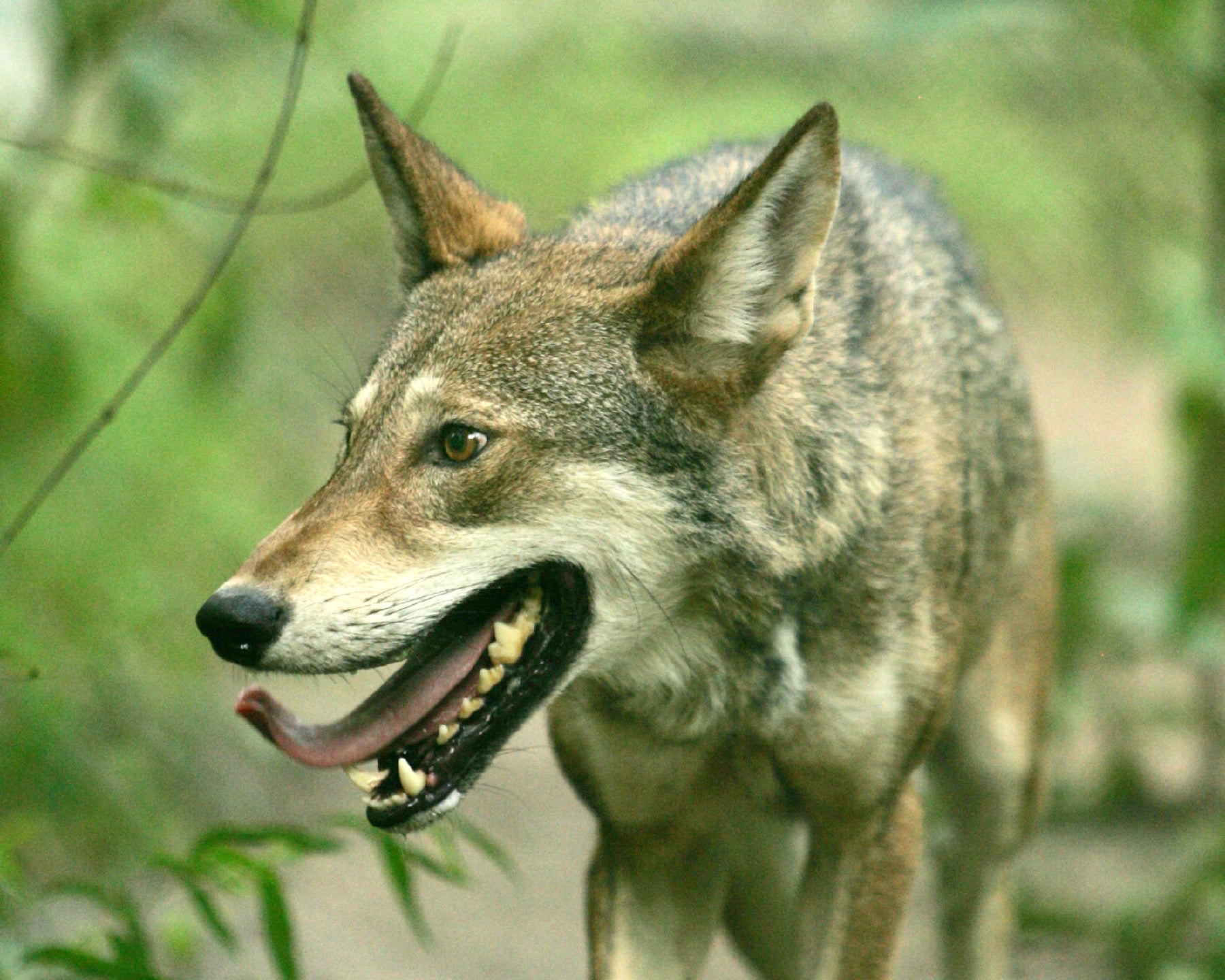MOORE OUTDOORS: Hidden reason for red wolf extinction discovered
Published 5:00 pm Thursday, July 27, 2017

- This red wolf is part of the federal captive breeding program and is a descendant of some of the original 14 wolves captured in Southeast Texas and Southwest Louisiana. (Photo courtesy US Fish and Wildlife Service)
Canis rufus, the red wolf, is one of the most endangered mammals on the planet.
With fewer than 50 released into the wild from captive breeding facilities that house around 200 nationwide, they have remained on the brink since their officially declared extinction from the wild in 1980.
While the possibility of remnant, hidden populations exist, their numbers are a tiny in comparison to their former range from the eastern seaboard into Central Texas.
Red wolves are the native wolf of Southeast Texas. In fact, the bulk of the animals that went into the original captive breeding program were captured in Orange, Jefferson and Chambers Counties here in Texas and Cameron Parish in Louisiana.
The red wolf would likely not exist at all if it were not for Southeast Texas.
The reason for their extinct designation is they hybridized with coyotes to create a genetic mutt of sorts, the “coywolf”, which still has many representatives in Texas and Louisiana.
A seldom mentioned aspect of the red wolf’s story, however, is targeted eradication.
What caused coyotes to push eastward from their stronghold in the west so quickly was that the vast majority of red wolves had been killed and in large portion through a variety of state-sponsored programs.
This created a vacuum and nature abhors a vacuum.
I recently came across a copy of the 1946-47 Louisiana Department of Wildlife and Fisheries Biennial Report that goes into detail about wolves in the state.
Under the headline “Predator Control” the following information is given.
“The Legislature of 1946 increased hunting license fees to $2.00. Twenty five percent of these funds (the increase) were dedicated to predator control.”
“There has been a great increase in the predators of the State. Undoubtedly a great deal of the increase was due to war conditions which took many men away from farms, lack of ammunition and difficulties due to travel restrictions in certain sections of the State. The increase in our foxes brought on an epidemic of rabies and a tremendous increase in wolves and bobcats brought on a terrific loss to our ground-nesting birds, to our mammals, particularly rabbits and our young deer.”
The text goes on to say they hired an official predator control supervisor and had two trappers working under him.
In all fairness it says their desire was to bring a “proper balance” between predators and prey but there was no doubt large-scale predator control aimed directly at red wolves in the state.
The article shows a photo of a predator control office with a dead “black wolf”.
Red was the primary color in the Texas region but the red wolf was once called the black wolf due to it being a common color in much of the specie’s range.
As far this writer knows there have never been any melanistic red wolves in the captive breeding program consisting of 14 animals taken chiefly from eastern Texas and southwestern Louisiana, showing at least in the strain of wolves initially captured the black strain was not present.
It is most likely gone forever.
Similar projects were initiated in most if not all states in the red wolf’s range on top of unrestricted harvest by anyone with a gun, leg hold trap or poison.
We have come a long way in wildlife management in the country in many ways but it is always good to look back so we don’t repeat the same mistakes.
Mark Twain once said: “History doesn’t repeat itself but it rhymes.”
It is up to us to figure make sure when it comes to wildlife good science trumps politics and conservation reigns supreme even in the hotly contested world of predator management.
Management is one thing, eradication is entirely something else and nearly 40 years after the red wolf’s official “extinction” in the wild, their story continues to unfold.
•
To contact Chester Moore, email him at chester@kingdomzoo.com. You can hear him on “Moore Outdoors” Fridays from 6-7 p.m. on Newstalk AM 560 KLVI or online at www.klvi.com.





